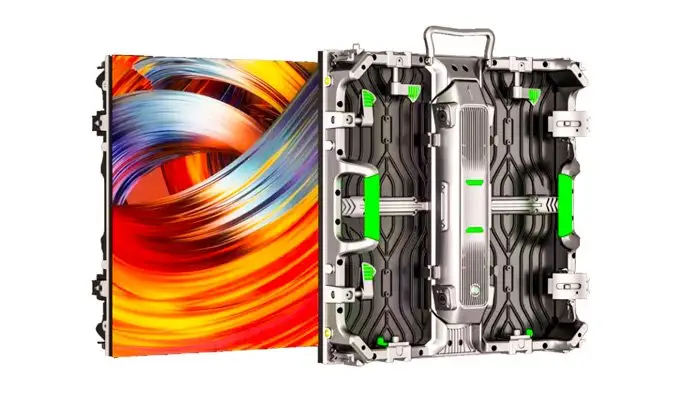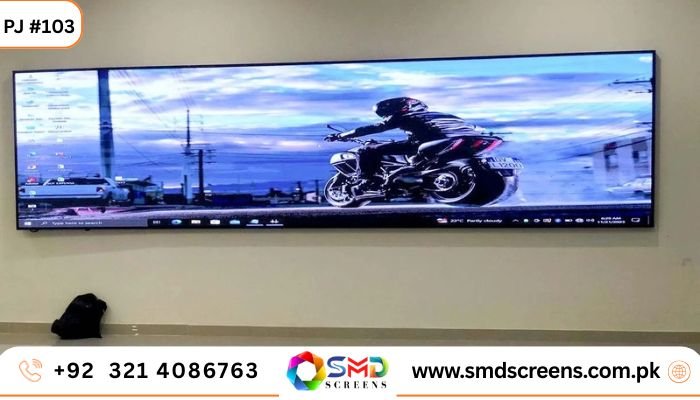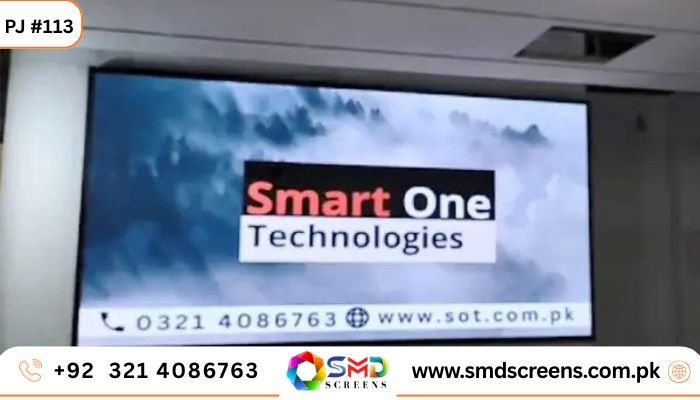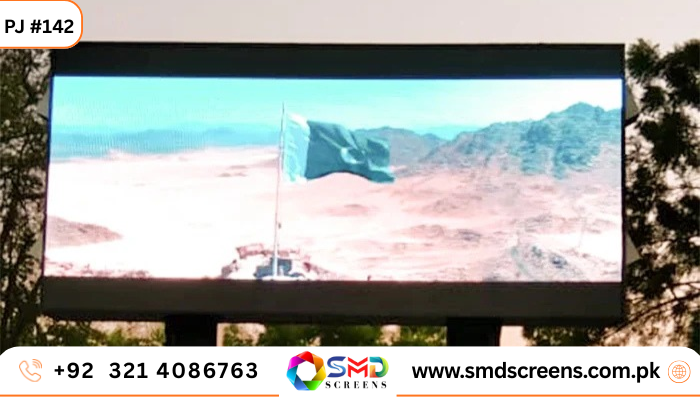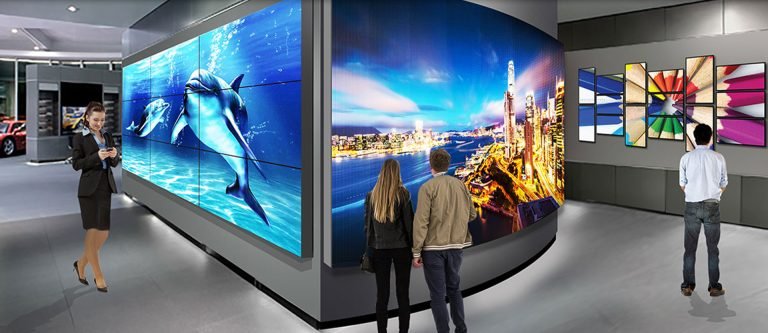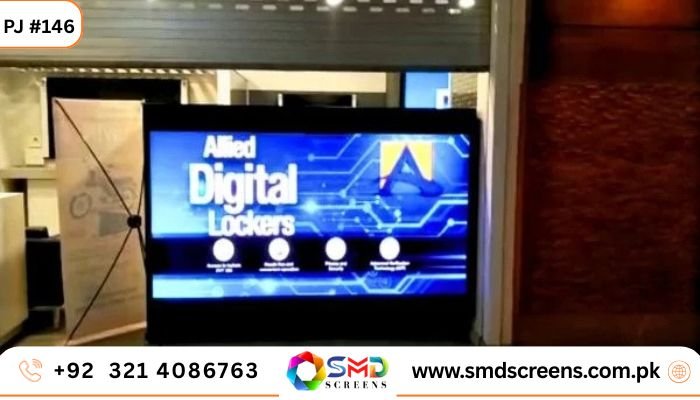Unveiling the Differences Between Indoor and Outdoor SMD Screens
Introduction
Screens with SMD (Surface-Mounted Devices) are a fantastic feat of technology that provides stunning, vivid images for various applications. Whether you want to add a touch of elegance to the look of a conference space or captivate the crowd at an outdoor function, knowing the fundamental distinctions between outdoor and indoor SMD screens is vital. Let’s look into the specifics so that you can make an informed decision.
What is an SMD Screen?
Definition and Technology
An SMD screen consists of small LEDs glued directly to the surface of the printed circuit board (PCB). This setup allows greater pixel density and improved color precision than traditional LED screens. SMD screens’ slim and practical layout makes them suitable for outdoor and indoor usage, and they deliver stunning pictures with various configurations.
Applications of SMD Screens
SMD screens can be used in various ways, including entertainment, advertising, sports, transportation, and much more. They’re renowned for their capability to create high-quality, crystal-clear images even in dim lighting.
Indoor SMD Screen
Features of Indoor SMD Screens
Indoor SMD screens are created to provide controlled lighting in areas where it remains consistent. The key features are:
- The moderate brightness settings are specifically designed for indoor lighting.
- The high pixel density allows for precise, close-up views.
- Lightweight and sleek designs that allow for seamless incorporation into areas.
Advantages of Indoor SMD Screens
- Improved Image Quality: The high pixel density guarantees high-quality, crisp images.
- Aesthetic Appeal Contemporary, sleek styles that work nicely in many indoor settings.
- Energie Efficiency The lower brightness results in lower power consumption.
Typical Uses
- Conference halls, boardrooms, and corporate rooms
- Retail stores and shopping malls
- Museums, theatres and theatres
- Indoor sports venues
Outdoor SMD Screen
Features of Outdoor SMD Screens
Outdoor SMD screens are designed to withstand harsh conditions with excellent image quality. These screens feature:
- Brightness levels that are high enough to withstand direct sun.
- Weatherproof construction to withstand the elements of wind, rain and dust.
- Strong materials that can stand up to temperature fluctuations.
Advantages of Outdoor SMD Screens
- Superior Visibility Brightness is high to ensure clarity, even in bright light.
- Stability is Created to stand up against physical and weather-related impacts.
- Wide-viewing angles are designed to provide optimal views from different directions and angles.
Typical Uses
- Outdoor advertising billboards
- Arenas and sports stadiums
- Public transport terminals
- Concerts and outdoor events
Critical Differences Between Indoor and Outdoor SMD Screens
Brightness Levels
The luminosity of an SMD screen is an important aspect. Outdoor screens are intended to be brighter than indoor screens, providing visibility even when exposed to direct light. Indoor screens have less brightness and are ideal for areas with controlled lighting.
Durability and Weather Resistance
Outdoor SMD screens are constructed to withstand weather-related conditions such as wind, rain, and dust. They are made of durable materials and have weatherproof designs, making them more durable than their counterparts in the indoor environment, which are not required to have such protection.
Viewing Distance and Angle
Outdoor SMD screens are designed for short viewing distances, offer large pixel counts, and deliver clear images. They are also designed to fit large spaces and provide larger views, ensuring clarity and brightness with a greater variety of angles.
Pixel Pitch
The distance between the centres of the adjacent pixels can be smaller for indoor SMD screens, leading to more excellent resolution and better image clarity. Outdoor screens are more prominent in pixel pitch and suitable for viewing from a distance where resolution is unnecessary.
Cost Considerations
Outdoor SMD screens typically cost more because of their higher durability, greater brightness quality, and weatherproof attributes. Due to their attention to resolution and attractive style, screens for indoor use are generally cheaper.
Technical Specifications
Below is a thorough review of the technical specifications used for outdoor and indoor SMD screens:
- Brightness: Indoor (500-1000 nits) vs. Outdoor (2000-5000 nits)
- Pixel Pitch: Indoor (1.5mm-4mm) vs. Outdoor (4mm-10mm)
- Weather Resistant: Indoor (None) as opposed to. Outdoor (IP65+ rating)
- viewing angle: Outdoor (up to 160deg) as opposed to. Outdoor (up to 140deg)
- Power Consumption: Indoor (lower) vs. Outdoor (higher)
Every detail is crucial to determine the most suitable display for your needs.
Choosing the Right SMD Screen for Your Needs
If you are deciding between outdoor and indoor SMD screens, you should consider the following elements:
- Environmental: Will the screen be placed in a room or exposed to outdoor elements?
- Screen Viewing Distance: The distance that viewers will stand from the display.
- Brightness requirements: Is the screen necessary to be seen under direct light?
- Cost: How much do you have budgeted for your display and its setup?
Installation and Maintenance
Installation Requirements for Indoor vs. Outdoor
Screens for indoor use are typically more straightforward due to their weight reduction and smaller profile. Outdoor screens require larger mounts to withstand extreme conditions and potential impact.
Maintenance Tips for Longevity
Maintenance is essential for all kinds of screens. For indoor screens, concentrate on cleaning the surface and ensuring proper airflow. Outdoor screens require more careful maintenance, such as inspecting weather seals, clearing debris and dust, and securing electronic components.
Case Studies
Examples of Successful Indoor SMD Screen Installations
- Corporate Boardrooms Enhanced quality of presentation featuring high-resolution monitors.
- Retail stores: Inspiring ads and promotional offers within the retail stores.
- Theatres Experiences that are immersive with stunning, vivid images.
Examples of Successful Outdoor SMD Screen Installations
- Stadiums have complete visibility of scoreboards and advertising from any position.
- Billboards: Captivating advertisements visible even under direct sunlight.
- Public Transport Terminals It is easy to read announcements and schedules.
Conclusion
Deciding between indoor and outdoor SMD screens will depend on several aspects, such as the surroundings, viewing distance, and budget. Screens for indoor use have a higher resolution and aesthetic Appeal when used in setting control. In contrast, outdoor screens offer durability and high brightness, ensuring viewing in any weather. You can select the ideal SMD screen for optimal performance when you consider your requirements.
FAQs
- What’s the lifespan of the SMD display?
- The life span of an SMD screen usually ranges between 100,000 and 50,000 hours, depending on its use and care.
- Is it possible to use the indoor SMD screen be used outside for a short period?
- Although it’s possible, it’s not recommended due to its lack of weather resistance and low brightness.
- What can I do to clean and keep my screen SMD?
- Use a dry, soft cloth for indoor screens and an easy-cleaning solution for outdoor screens. To protect them, regularly check and maintain the electrical connections and sealing seals.
- What is the difference in energy consumption between outdoor and indoor SMD screens?
- Outdoor screens require more energy due to the increased brightness and additional features, such as weather protection.
- How can I increase the brightness of my outside SMD display in direct sunlight?
- Ensure the screen has a highly bright rating (2000-5000 units), and consider an anti-reflective layer to minimize the reflection.

